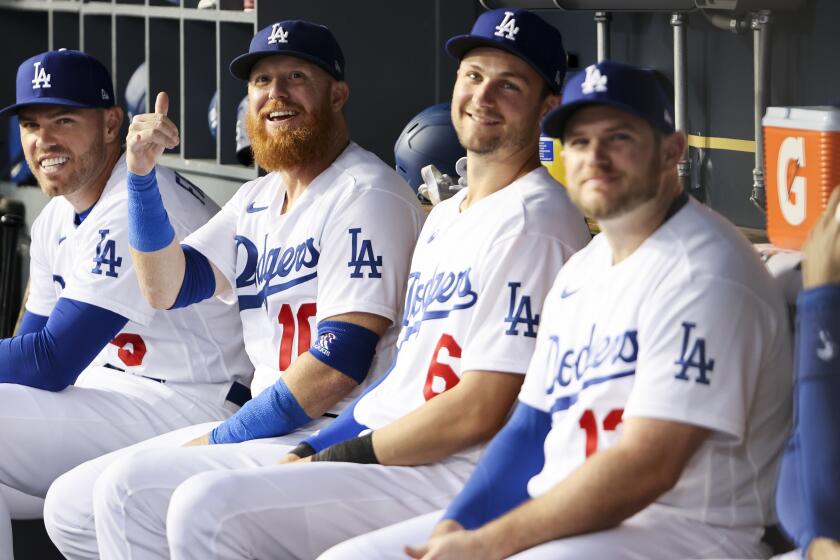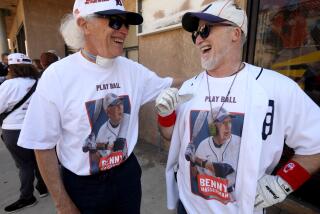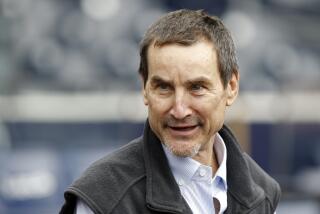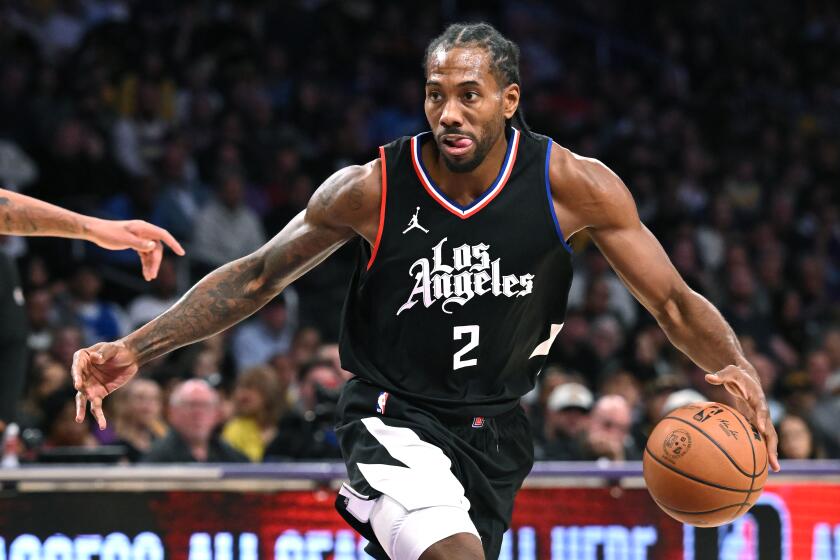
When Roberto Clemente Jr. woke on the morning of Dec. 31, 1972, he immediately tiptoed to his parents’ bedroom to see whether his father was up.
The elder Clemente, one of baseball’s biggest stars, suffered from insomnia, so Roberto Jr., then 7, was always careful not to wake him — not to mention his father had been busy organizing relief efforts for victims of a catastrophic earthquake in Nicaragua. Clemente’s wife, Vera, had put in room-darkening window shades to help her husband sleep, so Roberto Jr. felt around on the bed to make sure his father wasn’t there.
He found his parents at the dining room table and offered them the traditional greeting that Puerto Rican children give their parents: “Bendicion.” A request for a blessing.
The elder Clemente responded as he always did: “Que Dios te bendiga.” May God bless you.
For reasons Roberto Jr. still doesn’t understand, he then told his father, “Dad, don’t get on the plane, because it’s going to crash.”

“There was no way for me to know he was flying,” he said. “He hadn’t told me that he was flying and there was no sign in our house that he was flying.
“I said it again, and he told me not to worry, but I walked out and was crying, and he followed me and said, ‘I will see you when I get back.’ And that was the last time I talked to him.”
That evening, 50 years ago Saturday, the plane Clemente had arranged to fly supplies to Nicaragua crashed just off the coast of San Juan. His body was never found. The grief over his death at age 38 was undoubtedly most acute in his native Puerto Rico, but the shock and sadness extended well beyond the island.
During his 18-year major league career, all with the Pittsburgh Pirates, Clemente had become a legend, a National League most valuable player, a World Series MVP, a four-time batting champion and a 12-time Gold Glove winner who finished with exactly 3,000 hits. He also was blessed with perhaps the strongest, most accurate arm of any right fielder who played the game.
But it was off the field where Clemente stood apart even more. He was a humanitarian who devoted countless hours to helping people in need, particularly in Latin America, and to teaching children at baseball clinics that were about much more than hitting, catching and throwing. He also was instrumental in helping younger Latino players navigate life in the big leagues and was one of the early leaders of Major League Baseball’s players’ union.
“He was always trying to make the world a better place, and when you’re from Puerto Rico, you have a little bit of that in your DNA. You try to find ways to help people.”
— Mets shortstop Francisco Lindor on Roberto Clemente
Three months after Clemente’s death, the Baseball Writers’ Assn. of America elected him to the National Baseball Hall of Fame and Museum after waiving its customary five-year waiting period. Lou Gehrig is the only other player to be inducted under those circumstances.
“His presence at the Hall of Fame is so important that that’s one of the three statues that we have when you walk in because it defines character and courage,” said Hall of Fame President Josh Rawitch. (The other statues are of Gehrig and Jackie Robinson.) “And that’s what makes Roberto Clemente different from so many others, what he did off the field as well. And from our standpoint, it’s just an incredible honor for him to be one of the first faces you see when you walk in the door.”
Clemente’s and Robinson’s legacies are intertwined because of their tremendous impact on baseball and American culture, with Robinson breaking Major League Baseball’s color barrier in 1947 with the Brooklyn Dodgers and Clemente developing into MLB’s biggest Latino star.
MLB celebrates Jackie Robinson Day on Friday, which is the 75th anniversary of the Dodgers legend breaking baseball’s color barrier. Here’s our coverage.
“There are so many parallels between Jackie and Roberto,” said former Dodgers general manager Fred Claire, who knew Robinson. “They are exceptional in a historical way, not just as players but in what they stood for and for who they were as people.
“They should never be forgotten. Fans and players should understand how better served the game is because of them. You simply can’t do too much to honor them. Like Jackie, Roberto’s greatest legacy is how he served others and what he believed in.”
What he believed in, said Luis Clemente, the second of Roberto’s three sons, was aiding the less fortunate, people who didn’t receive much attention from society, whether it was because of their race, a lack of formal education or their economic circumstances.
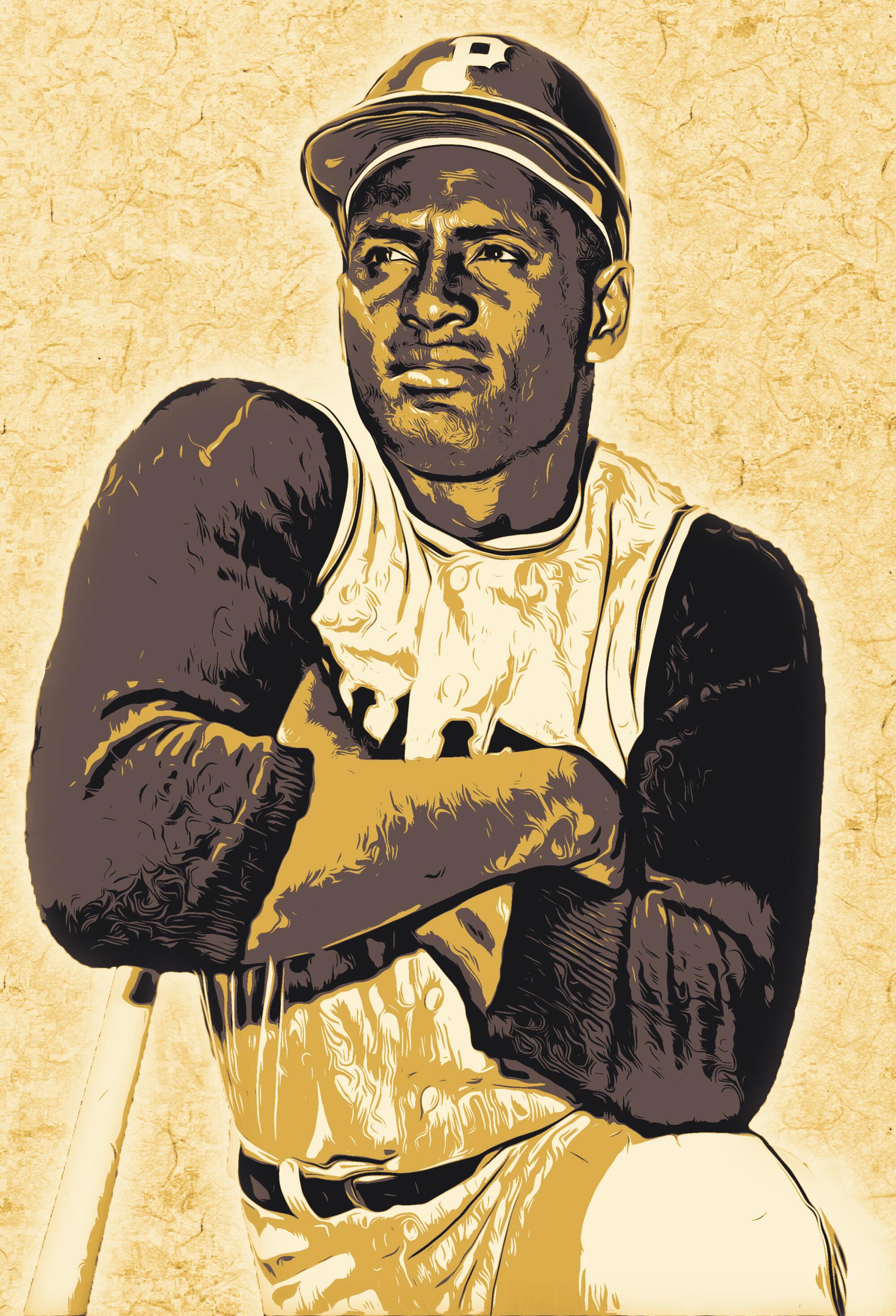
“Dad knew he had a mission when he started playing,” Luis Clemente said. “He always said that he was going to represent those that didn’t have a voice. … He knew he was representing the underdog in life and I think that resonated with many people. He was a real person and there was nothing fake about him.”
Clemente shared that philosophy with the country’s leading civil rights figure, the Rev. Martin Luther King Jr. King was impressed with Clemente’s activism and asked if he could see him at his farm in Puerto Rico when King visited the island. That someone of King’s stature wanted to talk with a professional athlete about social justice speaks volumes about Clemente’s influence.
“Dad was re-energized because Dr. King wanted to sit down with him,” Roberto Clemente Jr. said. “It reinforced for him that he was here for a reason, and that was to help people.
“We had a massive mango tree on our farm, the biggest mango tree I’ve ever seen, and I have no doubt that Dad and Dr. King sat under that tree and had a very interesting conversation.”
While he was using his celebrity to effect social change, Clemente never stopped working to become one of the major leagues’ top players and, above all, help his team win. Manny Mota saw that firsthand as one of Clemente’s Pirates teammates from 1963 to 1968, before he played for the Dodgers and developed into one of the best pinch-hitters in MLB history.
“He was proud to be one of the best players in the major leagues and he worked very hard at it all the time,” Mota said. “He was a man of great pride who cared a lot about the game.”
In a game at Forbes Field, the Pirates’ ballpark at the time, a batter hit a ball down the right-field line and it took a strange bounce and eluded Clemente, Mota said. What should have been a single turned into a double.
Players around the MLB on Wednesday will be wearing No. 21 in honor of Roberto Clemente Day. Here’s what you need to know about the Hall of Famer.
“After the game, Roberto said, ‘Manny, I want you to meet me at the ballpark early tomorrow and get a bag with 75 balls.’ I said, ‘What are you talking about? Why do you want to do that?’ He said, ‘I want to figure out how that guy hit the ball past me.’
“So the next day we got to the ballpark early and he goes out to right field and says, ‘I want you to try to hit the ball to me just like last night.’ I hit him 40, maybe 45 balls and he calls me out to right field. He had found a small piece of wood that the ball had bounced off the night before and that was why he missed it. He said, ‘Go ahead and hit me the rest of the balls. I want to make sure that never happens again.’ And that’s why he was the best right fielder in baseball.”
In the early 1970s, when Clemente was in the twilight of his career but still an all-star, he provided extra motivation to a Pirates outfield prospect, Dave Parker, when they played together during spring training. Parker eventually succeeded Clemente as the Pirates’ right fielder, won two NL batting titles and was the NL most valuable player in 1978.
“When he threw a bullet to third, I threw a bullet to third. When he hit a home run, I wanted to hit a home run,” Parker said. “He influenced me a lot and it drove me to be great.”


Five decades after his death, Clemente’s influence is still being felt in the baseball world and beyond. Streets, bridges, parks and schools are named for him, and not only in Puerto Rico and Pittsburgh. MLB’s Roberto Clemente Award is given annually to the player who “best represents the game of Baseball through extraordinary character, community involvement, philanthropy and positive contributions, both on and off the field.”
Clemente continues to inspire the sport’s current stars too. Francisco Lindor, the four-time all-star shortstop who plays for the New York Mets, grew up in Puerto Rico learning about the “Great One” in school.
“He’s a part of our history. We talk about him all the time; we would talk about him in class,” Lindor said. “Everybody in Puerto Rico knows about Roberto Clemente.
“He was always trying to make the world a better place, and when you’re from Puerto Rico, you have a little bit of that in your DNA. You try to find ways to help people.”
“He has become almost a saint. Because of the way he died and his body never being found, he lives forever in the minds of the fans.”
— Amaury Pi-Gonzalez, Hispanic Heritage Baseball Museum Hall of Fame co-founder
Lindor said that when he’s on the field, “I feel like I’m not only representing Clemente, but also the greats who came after him who were probably inspired by Clemente.”
Danny Torres, a freelance journalist and high school teacher from the Bronx, N.Y., started a podcast in 2020 called “Talkin’ 21,” which is devoted to Clemente and named for his uniform number. He first heard of Clemente when he was 6 years old and he watched his father, carrying that day’s New York Daily News, approach his mother in the kitchen of their apartment and say softly, “Do you know that Roberto died?”
“I could tell by my mom’s reaction and the looks on their faces that this was a really big deal,” said Torres, whose parents moved to New York from Puerto Rico in the early 1950s. “Later, the door to their bedroom was partially open and I saw my dad sitting there with the newspaper on his lap, crying. That was the first and only time I saw my dad cry.”
To this day, fans speak of Clemente with a reverence bordering on the religious. Amaury Pi-Gonzalez, vice president and co-founder of the Hispanic Heritage Baseball Museum Hall of Fame, has witnessed this phenomenon in the Bay Area.
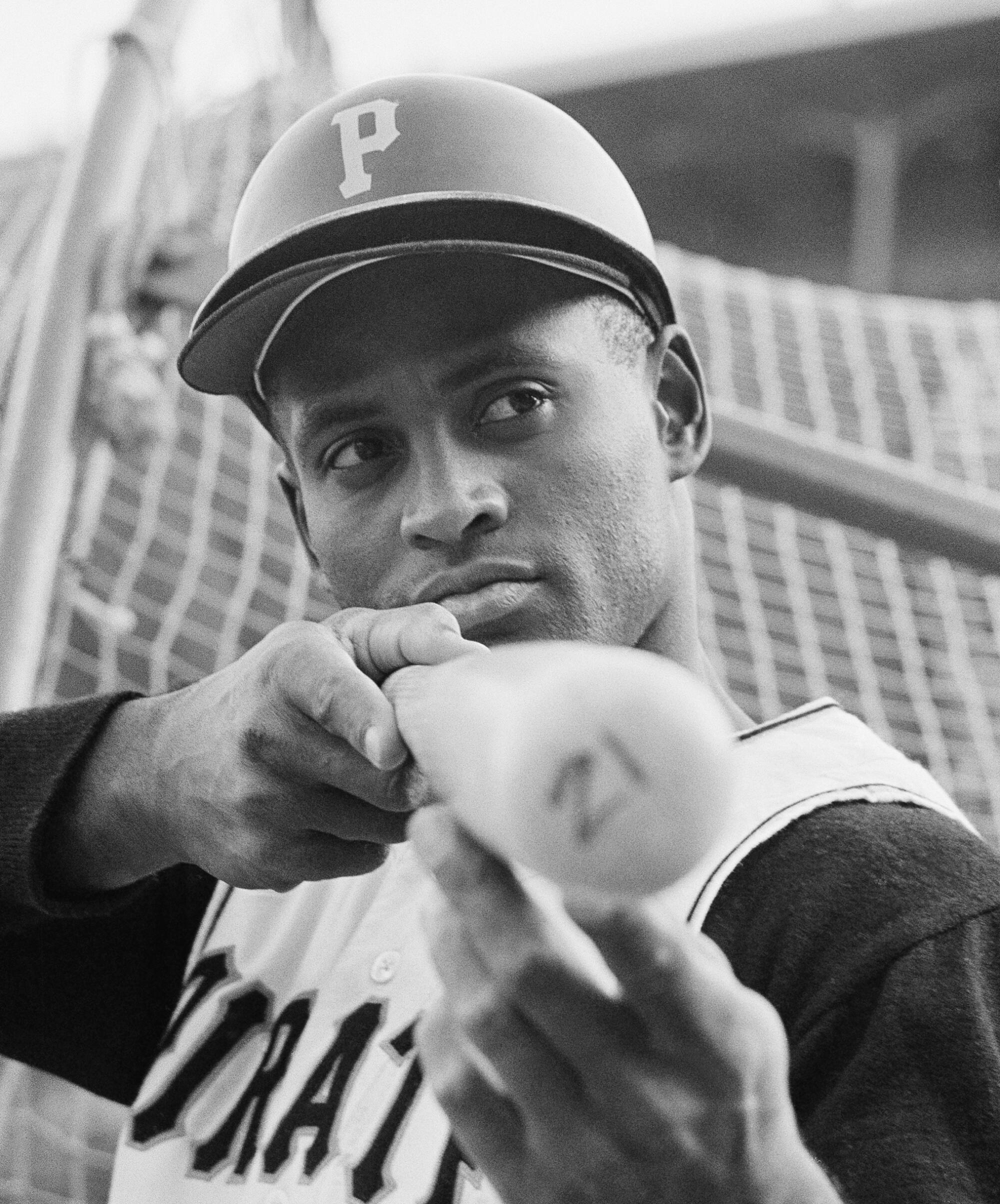
“The museum had an exhibit on Clemente some time ago at the San Francisco Main Library and people would kneel and pray in front of it,” said Pi-Gonzalez, a longtime Spanish-language broadcaster currently with the Oakland Athletics. “He has become almost a saint. Because of the way he died and his body never being found, he lives forever in the minds of the fans.
“Roberto Clemente is the first Hispanic superstar in Major League Baseball. For us, he’s like Babe Ruth and Ted Williams all wrapped up in one.”
Perhaps there is reason to believe that Clemente was not entirely of this world. In 1994, photographer Duane Rieder bought a former firehouse in Pittsburgh that he would eventually turn into the Clemente Museum. Twenty-one years later — 21, Clemente’s number — he learned that the Pittsburgh fire department had shut down its operations there at 9 p.m. on Dec. 31, 1972, just as Clemente was preparing to board the fateful flight.
“I couldn’t believe it,” said Rieder, who is still the museum’s executive director. “It’s like this was all just meant to be. I think Clemente is looking down at us and smiling.”
Dodgers third baseman Justin Turner has been named winner of the 2022 Roberto Clemente Award. He has a $16-million club option for next year.
One other eerie note: Gehrig, another baseball legend who died in his late 30s, spent the night in that firehouse during the 1927 World Series when he was visiting a friend who was a firefighter, Rieder said.
Four days before he died, Clemente held a youth baseball clinic in Aguadilla, Puerto Rico. At some point, he stepped into the batter’s box against a local pitcher, about 18 years old, recalls Roberto Jr., who was there. People in the stands yelled to Clemente, “Roberto, bet you can’t hit a homer.”
On the teen’s fifth pitch, in the last at-bat of his life, Clemente swung and sent the ball soaring over the outfield fence 350 feet away. The “Great One” handed the bat to the young pitcher as a souvenir, said goodbye to the kids and then prepared for his trip to Nicaragua.
More to Read
Get our high school sports newsletter
Prep Rally is devoted to the SoCal high school sports experience, bringing you scores, stories and a behind-the-scenes look at what makes prep sports so popular.
You may occasionally receive promotional content from the Los Angeles Times.

